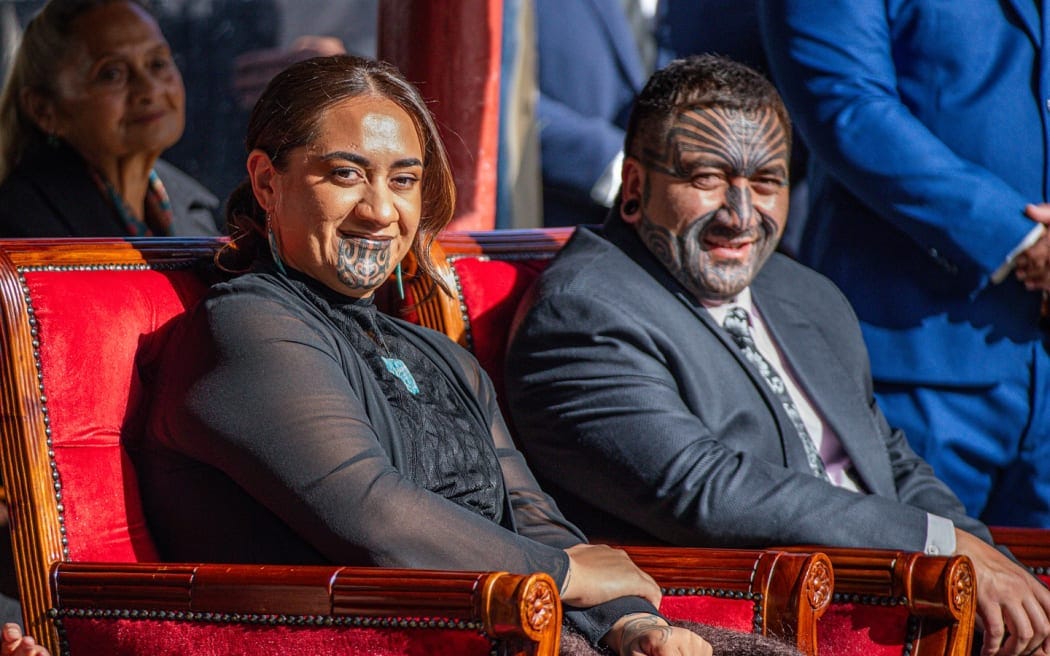A colonial spectacle in pinstripes
This week, much of New Zealand’s media turned its attention to the coronation of the so-called Māori Queen – or Koroneihana, if you prefer the more ceremonial term. Her full name is Te Arikinui Kuini Nga wai hono i te po, which, to be blunt, reads like a jumble of te reoish words thrown together. For the sake of this piece, I’ll refer to her as TAKNWHITP – because no one can be bothered to remember her entire name.
Now, the Māori word for queen is Kuini, pronounced “Queenie.” It’s a perfect example of English being repackaged as Māori, polished up to appear culturally authentic. The irony here is thicker than a kina roe.
What I find truly baffling is the contradiction at the heart of this celebration. These are the same voices in the Māori community who routinely rail against the Crown, colonialism, and New Zealand’s institutions. Yet here they are, clapping and cheering for a “Māori Queen” – a role that is, if you step back, entirely a colonial invention. It is not some timeless pre-European tradition; it is a construct born from the very system they claim to despise.
Then there’s her choice of clothing. TAKNWHITP turned up in a grey pinstripe suit, complete with a Victorian-style necktie – the epitome of colonial formality. For an occasion supposedly steeped in Māori heritage, one would expect a piupiu (grass skirt) and a feathered korowai (cloak). But no. The symbols of Māori tradition were entirely absent, replaced by the uniform of the British boardroom.
What I find truly baffling is the contradiction at the heart of this celebration. These are the same voices in the Māori community who routinely rail against the Crown, colonialism, and New Zealand’s institutions. Yet here they are, clapping and cheering for a “Māori Queen” – a role that is, if you step back, entirely a colonial invention. It is not some timeless pre-European tradition; it is a construct born from the very system they claim to despise.
Then there’s her choice of clothing. TAKNWHITP turned up in a grey pinstripe suit, complete with a Victorian-style necktie – the epitome of colonial formality. For an occasion supposedly steeped in Māori heritage, one would expect a piupiu (grass skirt) and a feathered korowai (cloak). But no. The symbols of Māori tradition were entirely absent, replaced by the uniform of the British boardroom.

It suggests that traditional Māori attire is reserved for spectacle when it suits the elite – a prop to be wielded for photo opportunities, ceremonial appearances, or media coverage. The very garments that are celebrated as cultural treasures are, it seems, secondary to the optics of power.
There’s a broader contradiction here that seems almost Kafkaesque. The same people who denounce colonial constructs will happily adopt and appropriate them when convenient. They reject the Crown, yet celebrate a “queen.” They decry European influence, yet appear in the most European garb imaginable. It is performative te aoish Māori, polished for public consumption, and divorced from the everyday reality of the communities they claim to represent.

Watching it all unfold, one cannot help but feel that the spectacle is almost satirical. Te ao Māori, in this context, becomes a theatre of contradictions – a culture at once proud of its heritage and strangely enamoured with the symbols of the very system it claims to oppose. It’s a contradiction that the media, predictably, either overlooks or actively celebrates, choosing narrative over nuance, spectacle over substance.
In the end, the coronation of TAKNWHITP is less about Māori tradition and more about optics, performance, and contradictions dressed up in pinstripes. It is a vivid illustration of a culture caught between resisting colonial influence and indulging in the trappings of colonialism when convenient. And for anyone paying attention, it is almost impossible to watch without feeling a little embarrassed for them.
Matua Kahurangi is just a bloke sharing thoughts on New Zealand and the world beyond. No fluff, just honest takes. He blogs on https://matuakahurangi.com/ where this article was sourced.


6 comments:
There is a maori queen?
Who knew?
More: Who cares?
Reported that the most treasured cloaks were laid out for the elite attending the formal evening party to walk on. I guess like red carpet. I don't get that at all.
the reinvigoration of maori with ethno-nationalism
The trouble with 'ethnonationalism' when you are dealing with a tribal people is that it tends to very rapidly degenerate into 'ethnomicronationalism' viz tribalism. Many, many times have we seen this in developing countries. The issue was said to be race while the evil White man was still in charge and all the poor oppressed Blacks rallied under the flag of independence and self-determination but the moment Whitey was booted out they started getting stuck into one another. You see this all over Africa in particular. The same is already starting to happen here between Maori tribes.
While Eva corlett of the guardian ignored it, as did msm in nz, the queens brother was wearing an electric blue pakeha fedora and matching pakeha suit and the queen was in an equally electric blue pakeha style dress and not in cultural costume. Reverse cultural appropriation?
Just like Charlie Boy and his extended family in the UK, a waste of space, time and money.
Get rid of the lot.
Post a Comment
Thank you for joining the discussion. Breaking Views welcomes respectful contributions that enrich the debate. Please ensure your comments are not defamatory, derogatory or disruptive. We appreciate your cooperation.